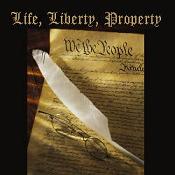Of brooches, patches, and nametags
From wine critic Matthew DeBord:
Apparently it's a little too much to expect someone writing for a major newspaper of record to understand these little things called "details" that would add context to a piece of writing.
Gen. David H. Petraeus may be as impressive a military professional as the United States has developed in recent years, but he could use some strategic advice on how to manage his sartorial PR. Witness his congressional testimony on the state of the war in Iraq. There he sits in elaborate Army regalia, four stars glistening on each shoulder, nine rows of colorful ribbons on his left breast, and various other medallions, brooches and patches scattered across the rest of the available real estate on his uniform. He even wears his name tag, a lone and incongruous hunk of cheap plastic in a region of pristine gilt, just in case the politicians aren't sure who he is.
That's a lot of martial bling, especially for an officer who hadn't seen combat until five years ago. Unfortunately, brazen preening and "ribbon creep" among the Army's modern-day upper crust have trumped the time-honored military virtues of humility, duty and personal reserve.I actually agree with him on the ribbon creep. Unfortunately for Mr. DeBord, it's not restricted to the upper crust. It's not a conspiracy by the generals to make themselves feel more manly and to intimidate simple suit wearing legislators. It's just the way the military is. Given the choice, when I pin on butter bars I'd like the only ribbons on my uniform to be the ones I've earned, which in my case would be one: marksmanship ribbon for qualifying expert on the M-9. Since I'm in the military during a "time of war" I'll get to also pin on the ketchup and mustard. Personally I think that's a load of crap, but I'll wear it because (and here's the important point that Mr. DeBord REALLY misses) it's called a uniform for a reason. Gen. Petraeus doesn't get to pick which medals and patches he wears. He doesn't get to decide to wear his super duper special titanium name tag instead of his cheap plastic one. He doesn't get to decide whether or not to wear his "The General" name tag instead of his real name.
The greatest military leaders, in the age of organized national armies, have often conspicuously modified the official requirements of the uniform, even in the most public of settings. Ulysses S. Grant accepted Robert E. Lee's sword while outfitted in disheveled Union blue and muddy boots. Douglas MacArthur presided over the signing of the Japanese Instrument of Surrender on the deck of the battleship Missouri without donning so much as a necktie with his khakis. George Patton was flamboyant, in his jodhpurs and riding boots, but he backed it up in battle after battle. His legend derived equally from brilliant tactics and an outrageous wardrobe.Personally, I think one of the most dishonorable things Gen. Grant and Gen. MacArthur did was to receive those surrenders in the fashion they did. Acting in that manner shows, to me, utter contempt and disrespect for your opponent. I'm not sure how Gen. Patton fits into this. Apparently Mr. DeBord feels that if Gen. Petraeus would run around Iraq beating enlisted men suffering from PTSD and wasting lives in useless assaults he would be entitled to wear a flashy uniform. As for Gen. Eisenhower and Gen. Marshall, they would've been only authorized to wear 11 and 9 ribbons, respectively. So while they may have cut down on their ribbons a bit, their wearing of one and three rows of ribbons is more a symptom of the military's habit of giving out ridiculous amounts of medals these days.
Perhaps the best example, however -- and one that Petraeus and his cadre should look to for inspiration -- was set by two of the most politically savvy generals America has produced: Dwight Eisenhower and George Marshall. In photographs following World War II, with Ike fresh from rescuing Western civilization while Marshall was working to rebuild it, both men appear victorious, yet somber, cognizant of the challenges met and the challenges ahead. Eisenhower wears a single row of ribbons, Marshall three.
Apparently it's a little too much to expect someone writing for a major newspaper of record to understand these little things called "details" that would add context to a piece of writing.








<< Home